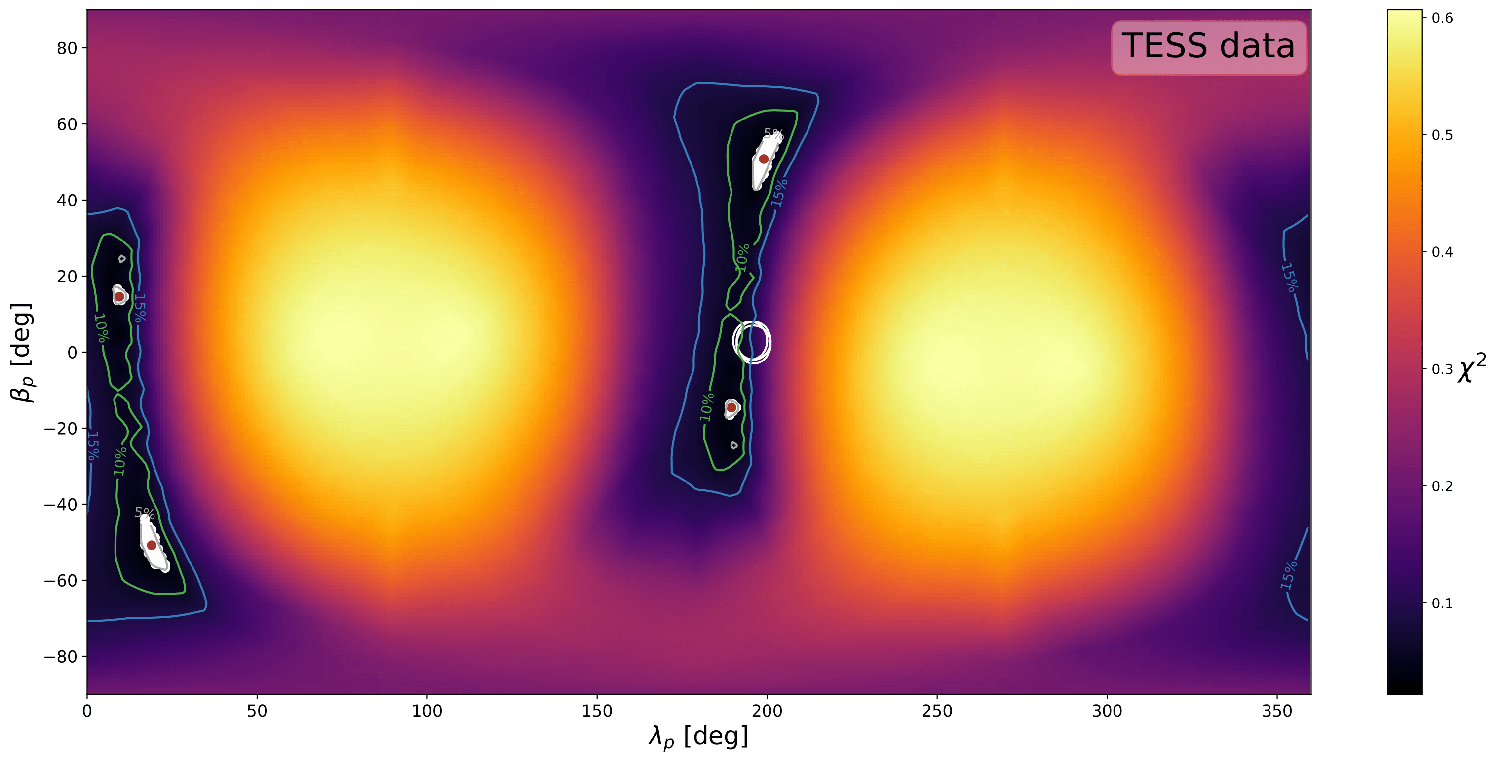- 1Konkoly Observatory, Research Centre for Astronomy and Earth Sciences, HUN-REN, Konkoly Thege 15-17, H-1121 Budapest, Hungary
- 2CSFK, MTA Centre of Excellence, Budapest, Konkoly Thege 15-17, H-1121, Hungary
- 3ELTE Eötvös Loránd University, Institute of Physics and Astronomy, Budapest, Hungary
Using multi-directional measurements from the TESS, we aim to determine the approximate shape and rotation axis of asteroids in the main belt. As a benchmark study, we selected 43 minor planets based on three criteria: each must have observations in at least three separate TESS sectors, an apparent magnitude of <= 17, and a corresponding solution in the DAMIT (Database of Asteroid Models from Inversion Techniques) database. Due to the limited number of observations per target, we apply a low degree-of-freedom, simple shape model of a triaxial ellipsoid, but consider different scattering laws, taking into account the actual illumination geometry obtained from relative positions of the observer and a possible pole solution. The resulting best-fit spin axis orientations show good agreement with the DAMIT solutions. We will use this technique to obtain shape and spin axis solutions for ten thousands of asteroids observed with TESS.

Figure 1.: Pole orientation χ2 map of (22) Kalliope. Possible rotation axes as a function of size from the TESS light curves. The contours represent 5, 10 and 15% of the value of the data line. White circles represent the DAMIT solutions. The white dots show the 100 smallest values of the data set while the red dots show their median.
How to cite: Takács, N., Kiss, C., Pál, A., and Szakáts, R.: Shape and rotation modelling of asteroids based on multi-directional TESS measurements, Europlanet Science Congress 2024, Berlin, Germany, 8–13 Sep 2024, EPSC2024-101, https://doi.org/10.5194/epsc2024-101, 2024.